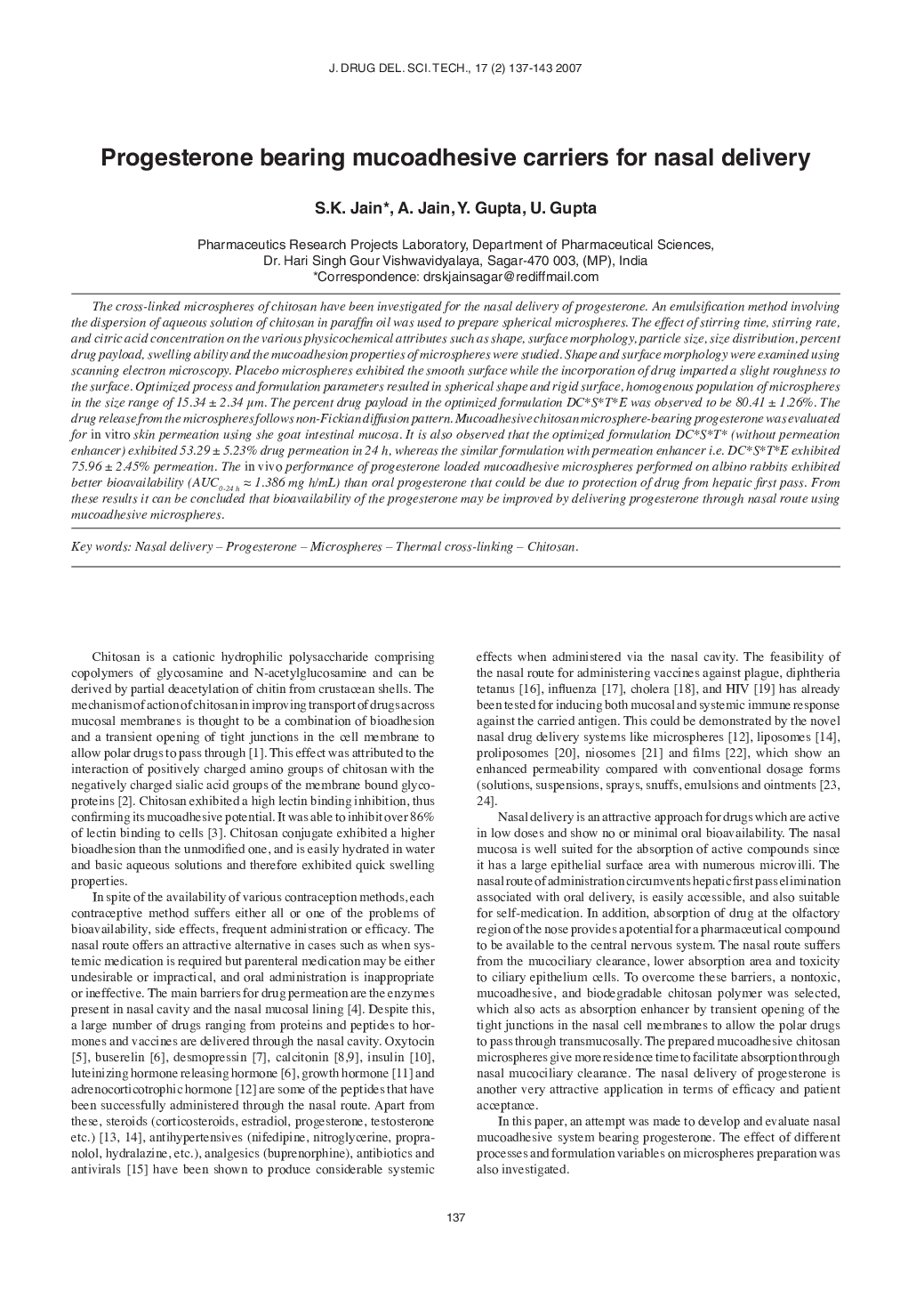| Article ID | Journal | Published Year | Pages | File Type |
|---|---|---|---|---|
| 2483824 | Journal of Drug Delivery Science and Technology | 2007 | 7 Pages |
The cross-linked microspheres of chitosan have been investigated for the nasal delivery of progesterone. An emulsification method involving the dispersion of aqueous solution of chitosan in paraffin oil was used to prepare spherical microspheres. The effect of stirring time, stirring rate, and citric acid concentration on the various physicochemical attributes such as shape, surface morphology, particle size, size distribution, percent drug payload, swelling ability and the mucoadhesion properties of microspheres were studied. Shape and surface morphology were examined using scanning electron microscopy. Placebo microspheres exhibited the smooth surface while the incorporation of drug imparted a slight roughness to the surface. Optimized process and formulation parameters resulted in spherical shape and rigid surface, homogenous population of microspheres in the size range of 15.34 ± 2.34 μm. The percent drug payload in the optimized formulation DC*S*T*E was observed to be 80.41 ± 1.26%. The drug release from the microspheres follows non-Fickian diffusion pattern. Mucoadhesive chitosan microsphere-bearing progesterone was evaluated for in vitro skin permeation using she goat intestinal mucosa. It is also observed that the optimized formulation DC*S*T* (without permeation enhancer) exhibited 53.29 ± 5.23% drug permeation in 24 h, whereas the similar formulation with permeation enhancer i.e. DC*S*T*E exhibited 75.96 ± 2.45% permeation. The in vivo performance of progesterone loaded mucoadhesive microspheres performed on albino rabbits exhibited better bioavailability (AUC0 -24 ≈ 1.386 mg h/mL) than oral progesterone that could be due to protection of drug from hepatic first pass. From these results it can be concluded that bioavailability of the progesterone may be improved by delivering progesterone through nasal route using mucoadhesive microspheres.
